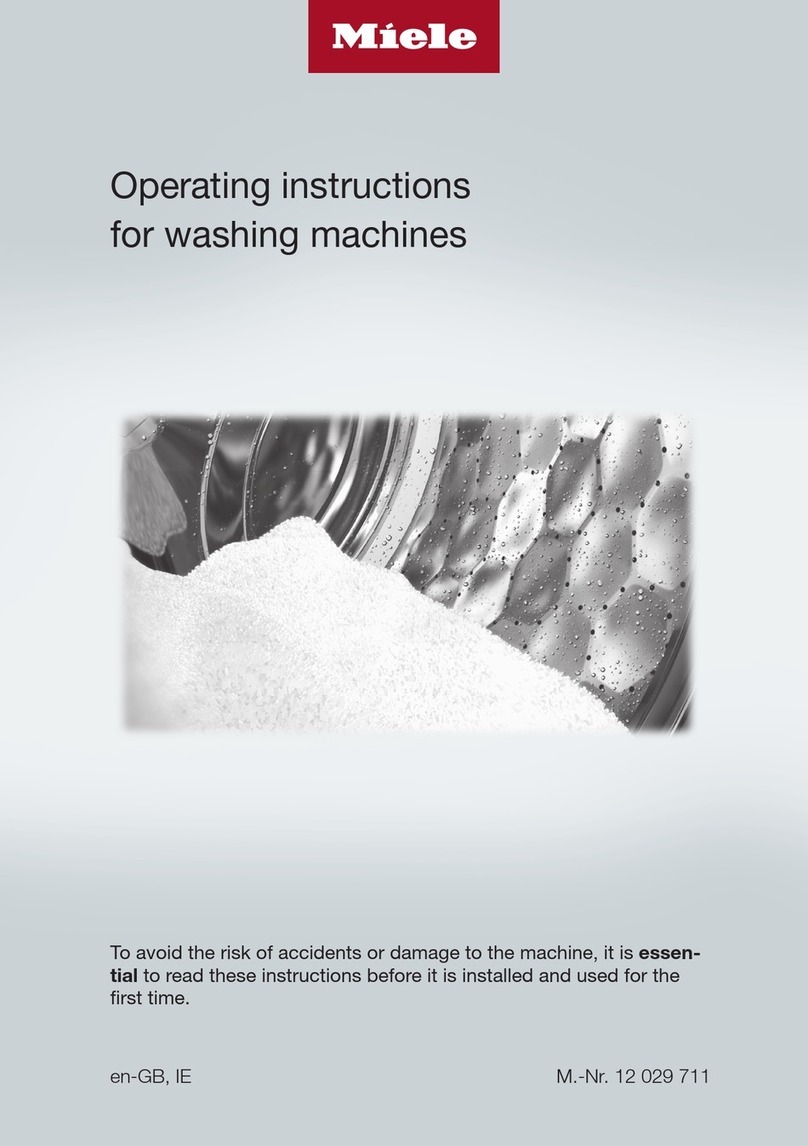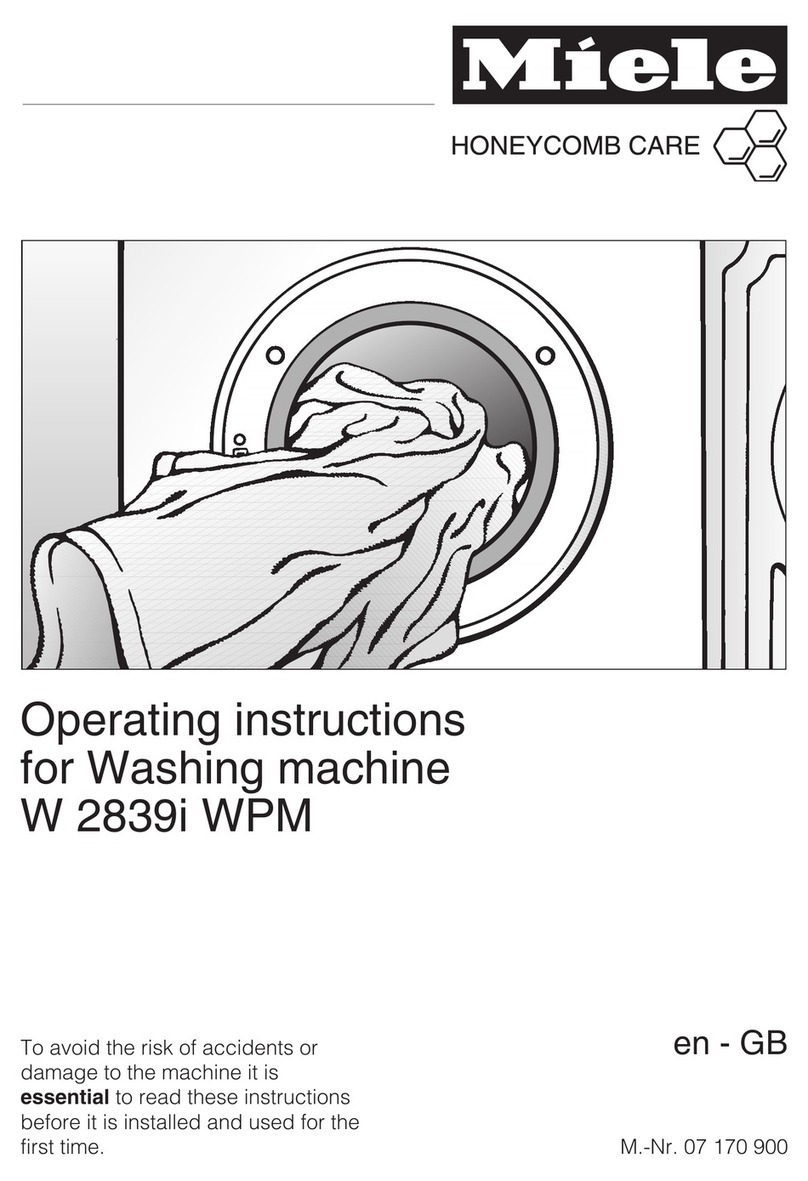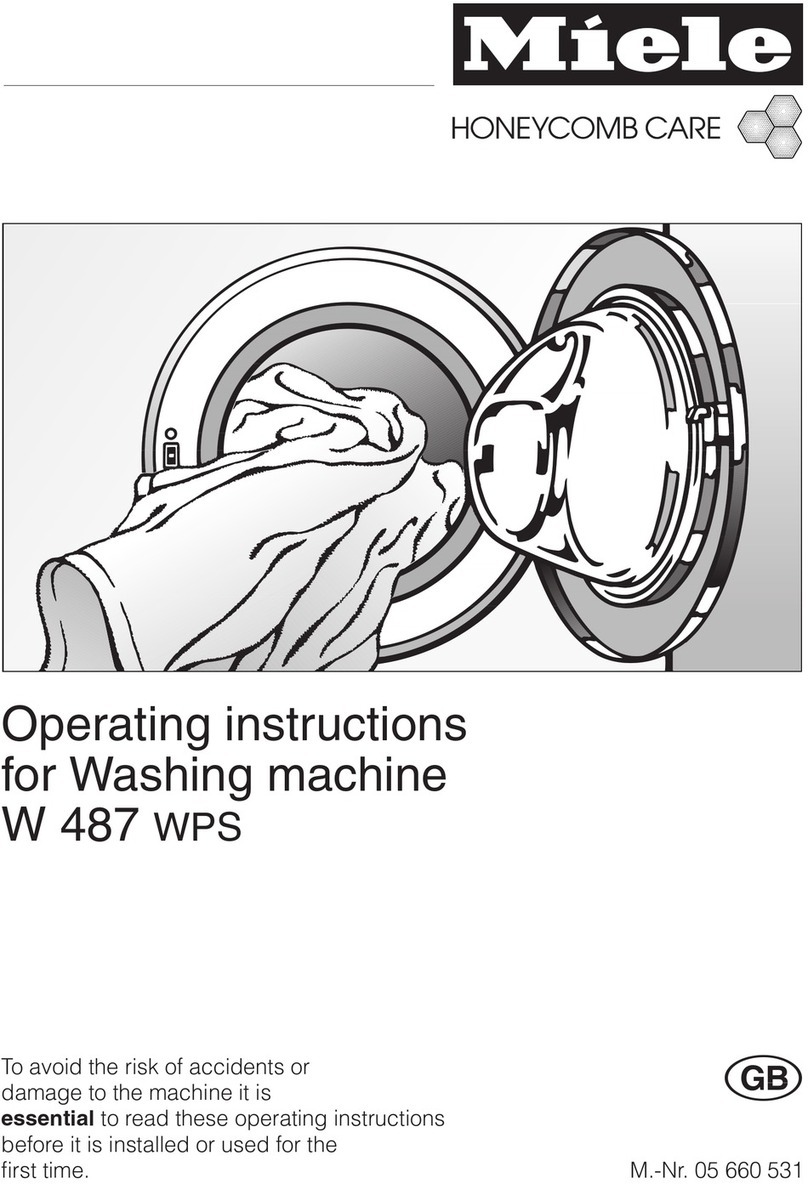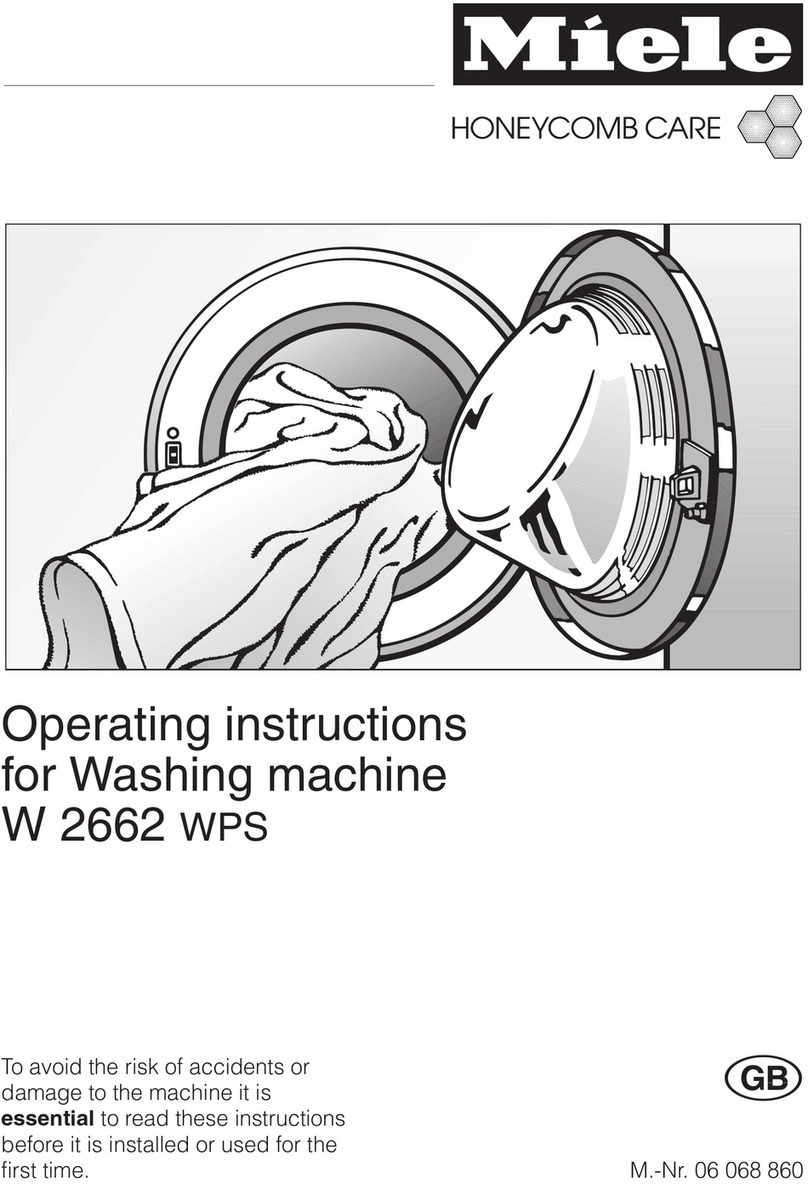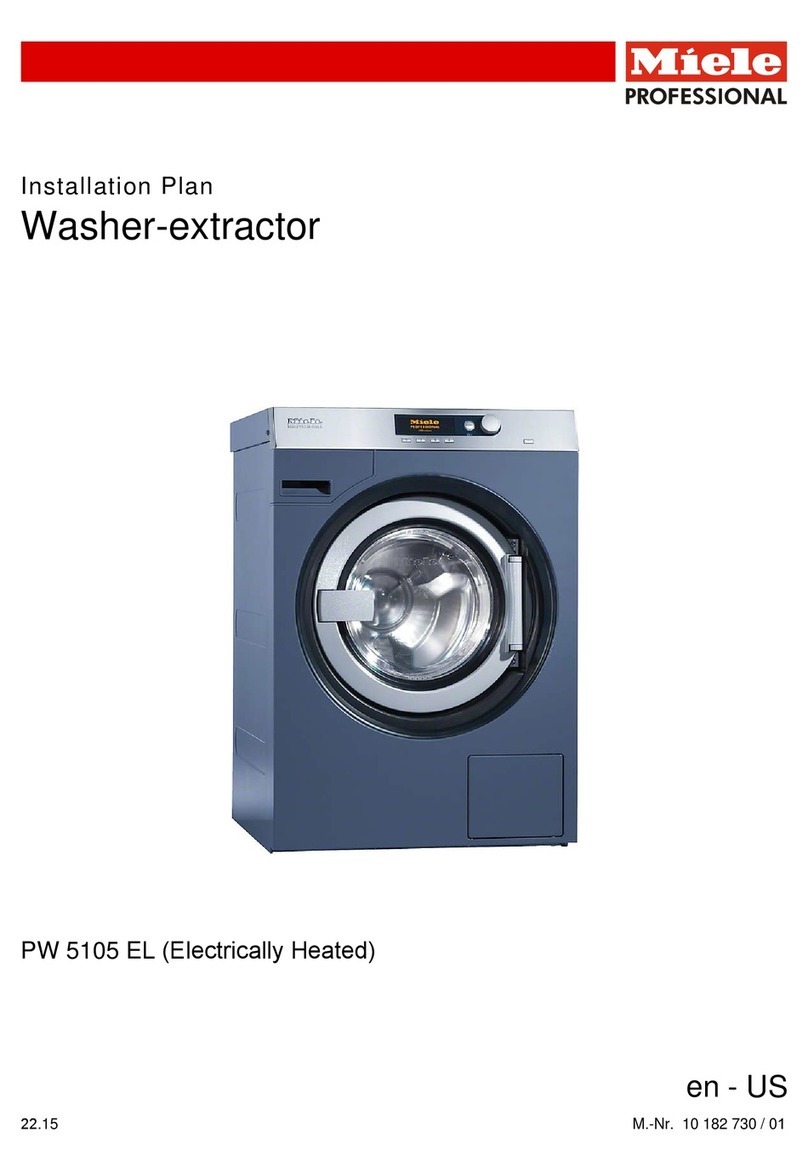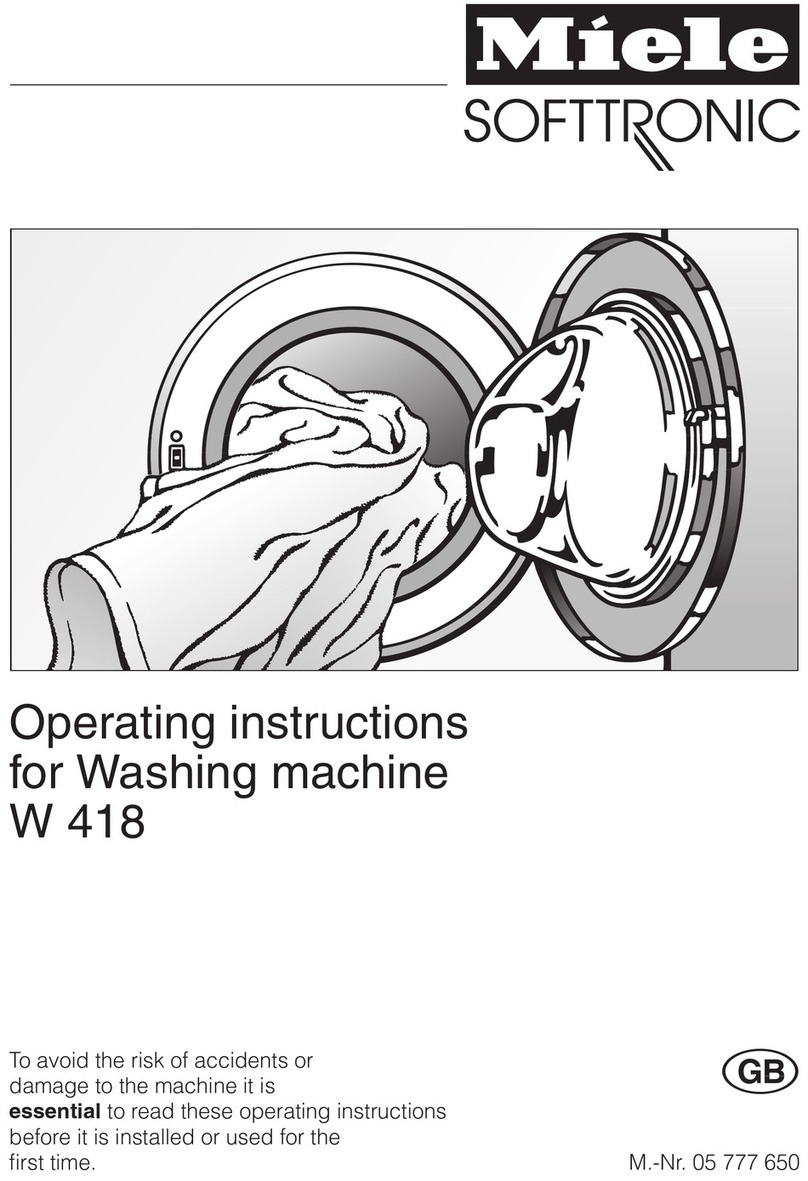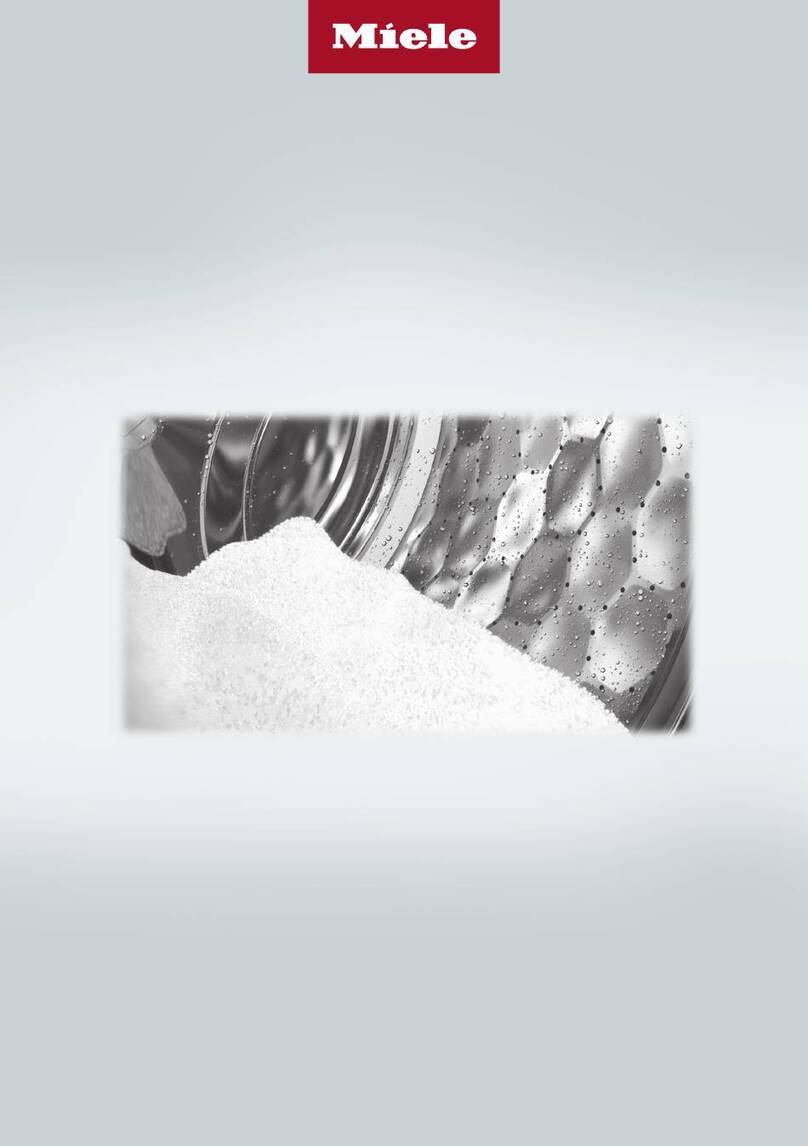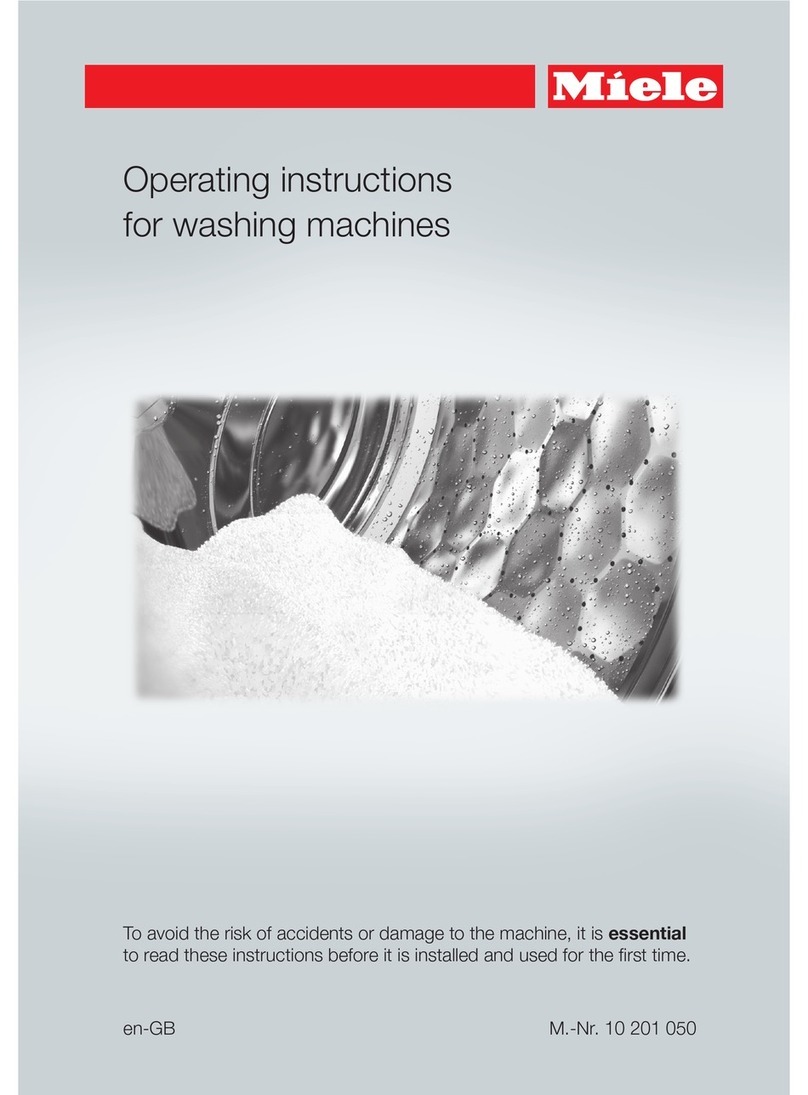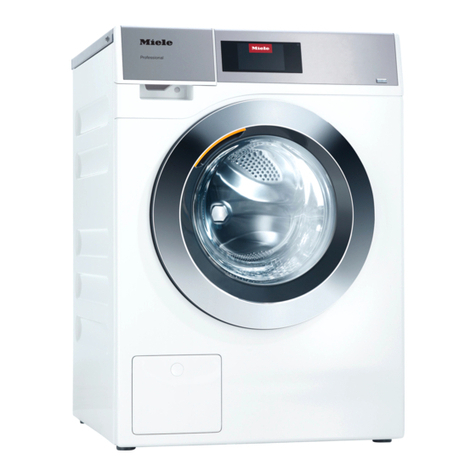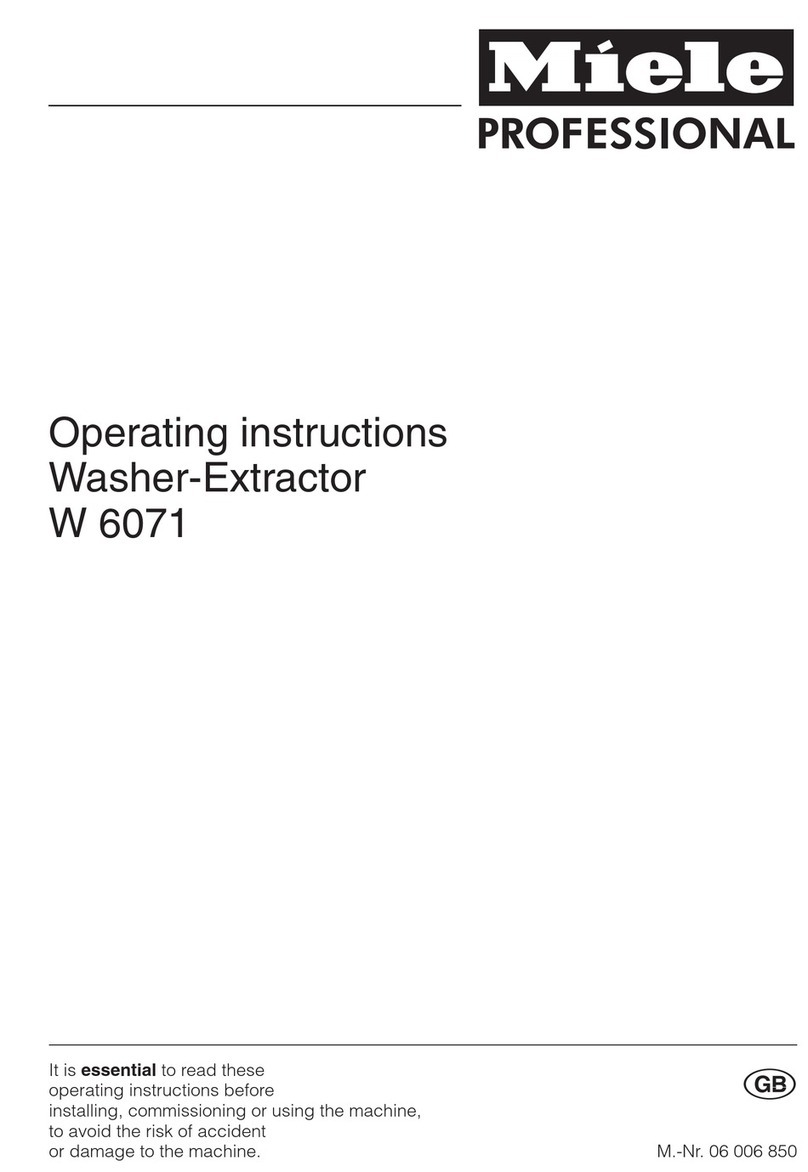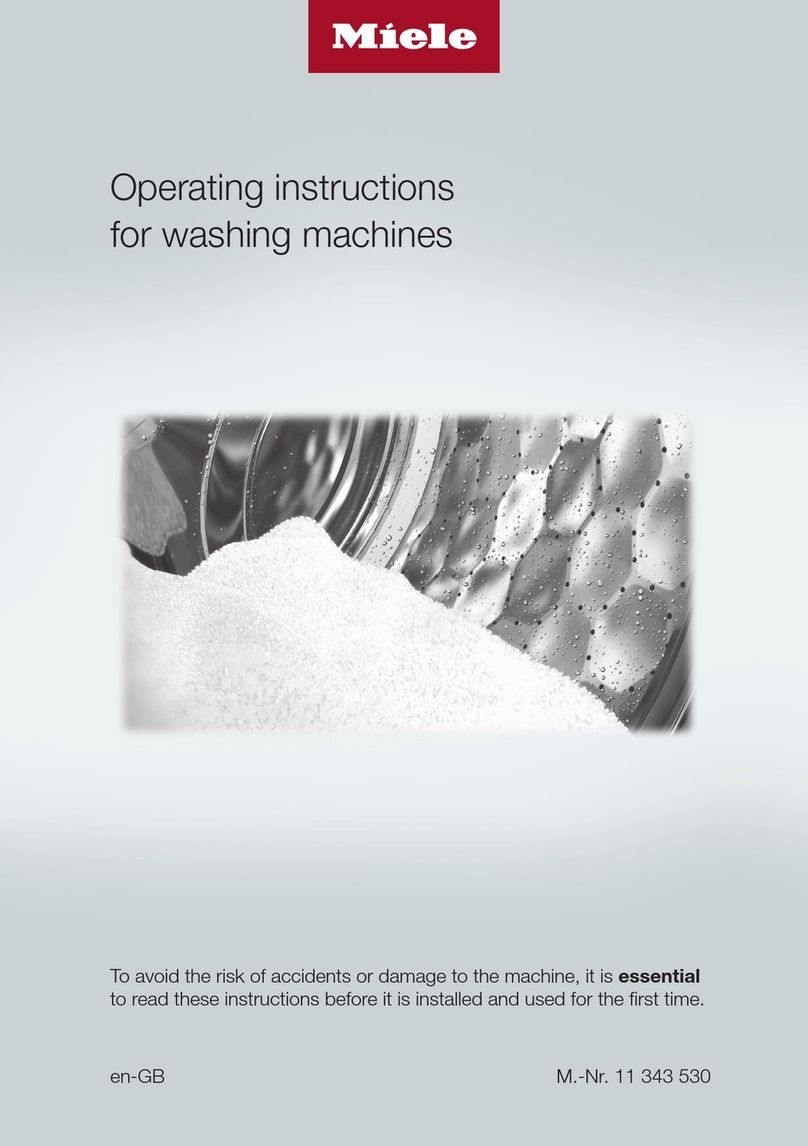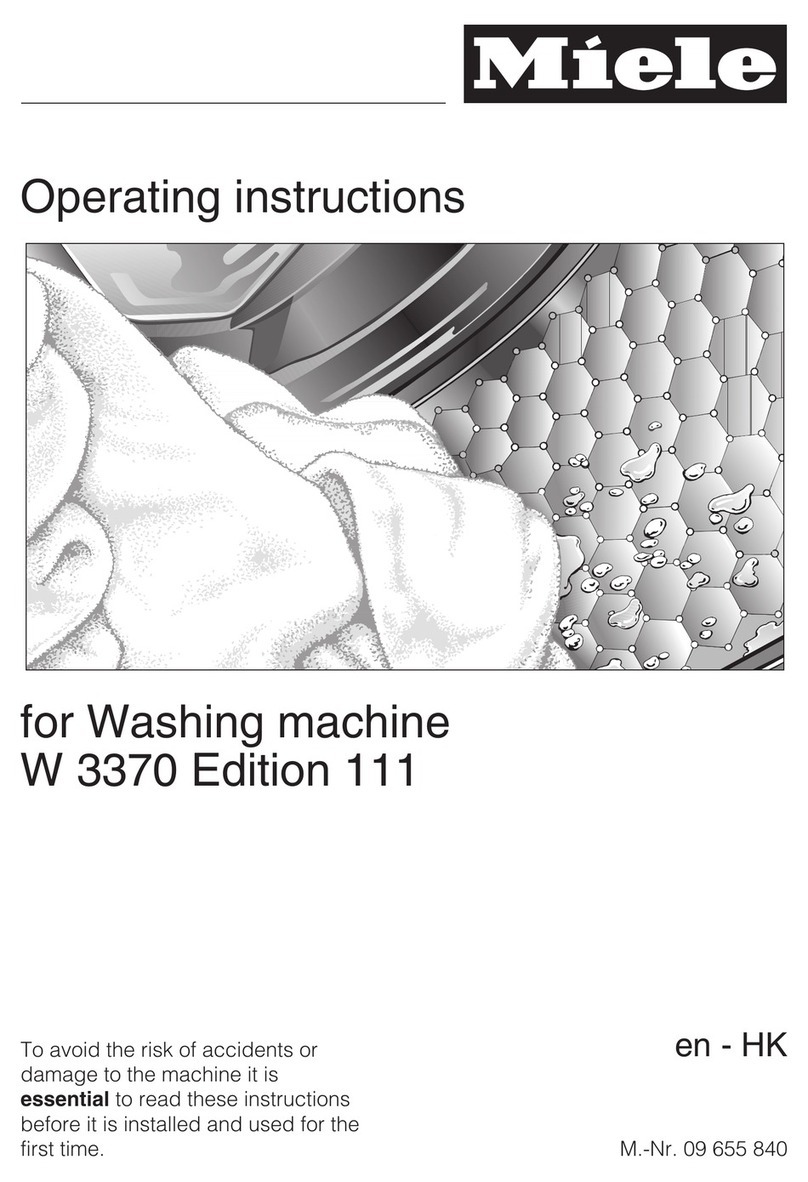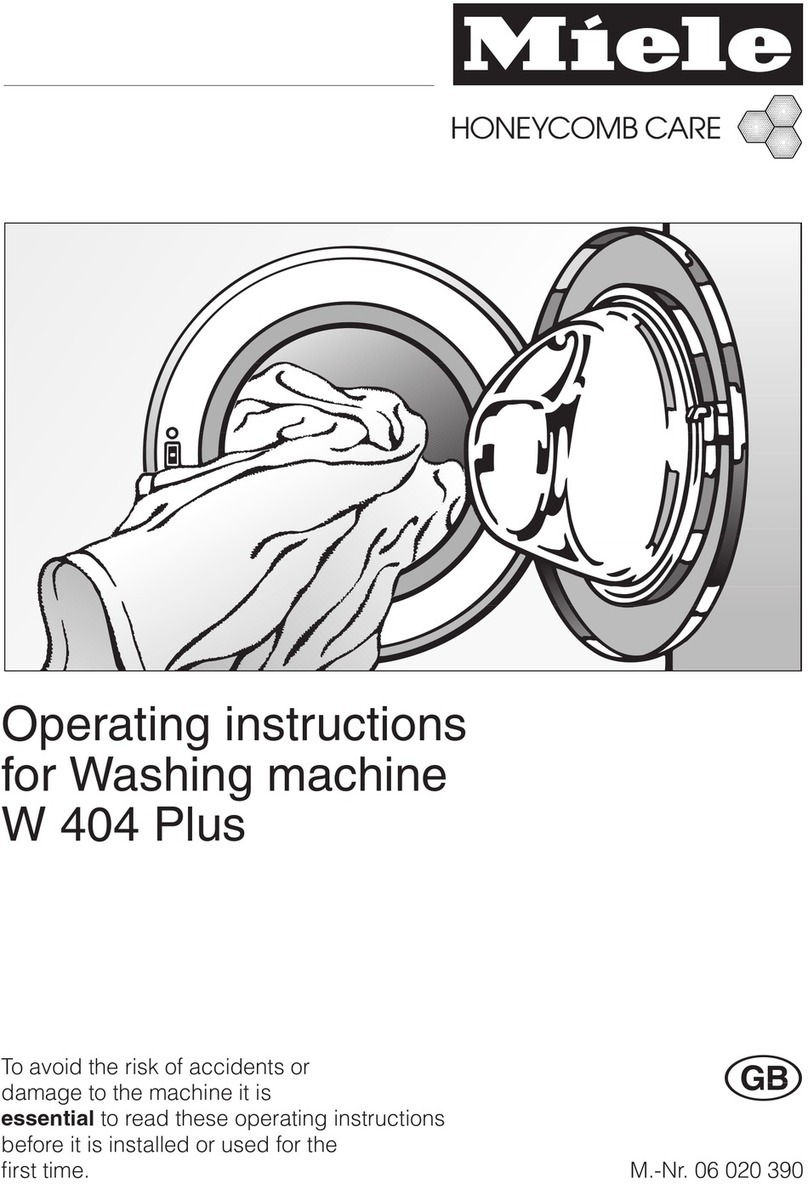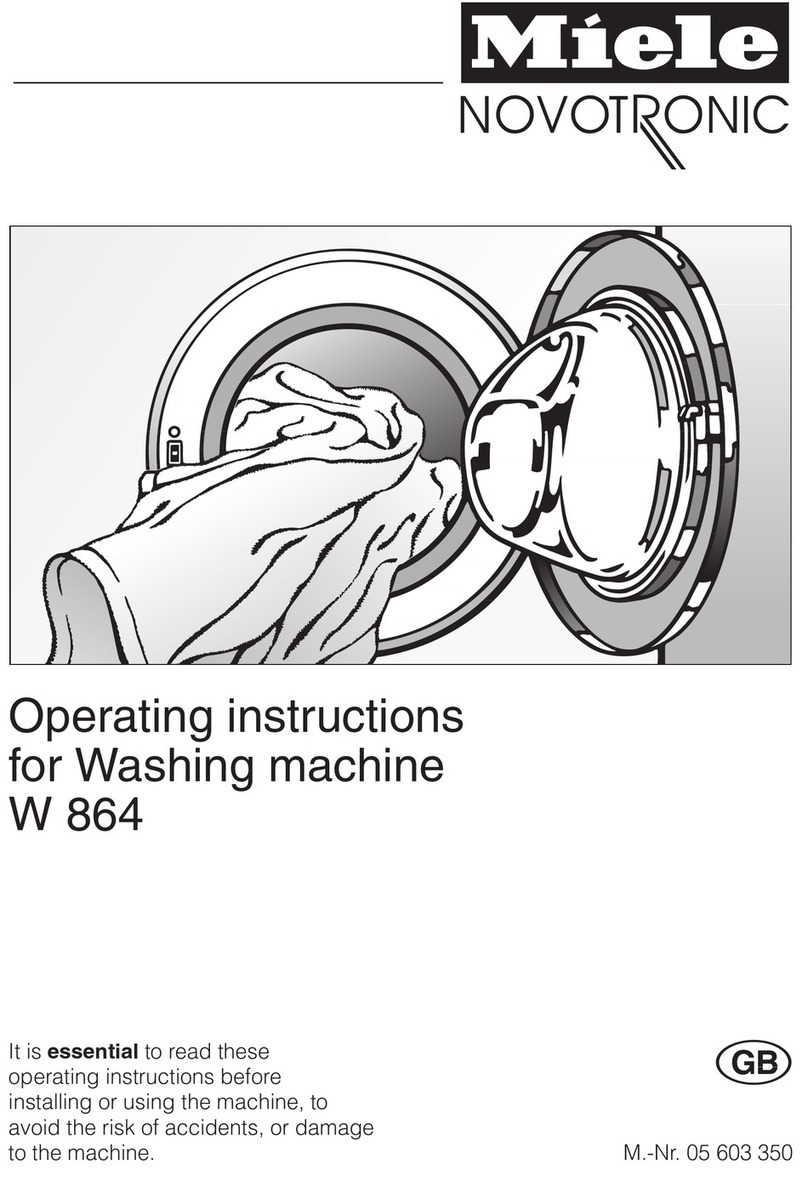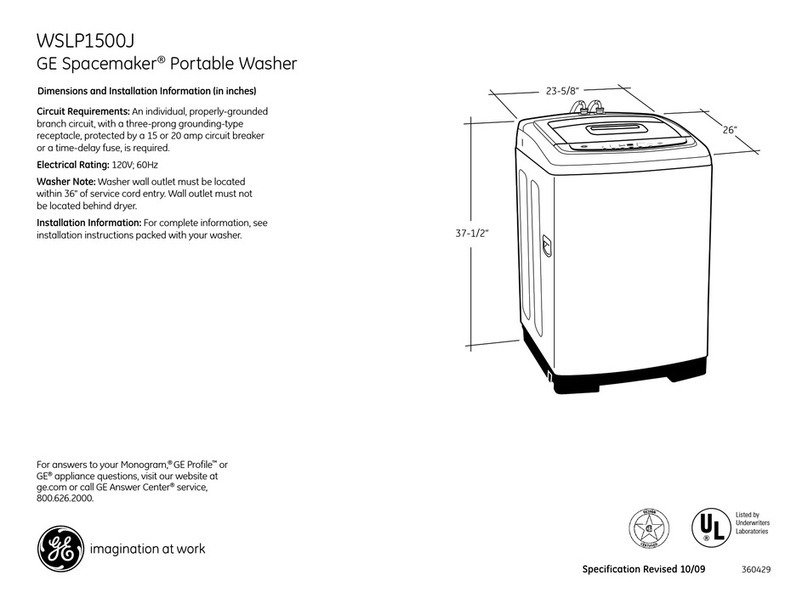~Pre-treatments with cleaning or
disinfecting agents can create foam, as
can certain types of soiling and
chemical agents. Foam can have an
adverse effect on the disinfection and
cleaning result.
~Foam must not be able to escape
from the wash cabinet. It would hinder
the correct functioning of the machine.
~The process used should be
checked regularly by the supervisor to
monitor foaming levels.
~To avoid the risk of damage to the
machine and any accessories used
with it caused by chemical agents,
soiling and any reaction between the
two please read the notes in "Chemical
Processes and Technology".
~Where a chemical agent is
recommended on technical application
grounds (e.g. a cleaning agent), this
does not imply that the manufacturer of
the machine accepts liability for the
effect of the chemical on the items
being cleaned.
Please be aware that changes in
formulation, storage conditions etc.
which may not be publicised by the
chemical manufacturer, can have a
negative effect on the cleaning result.
~When using cleaning agents and
specialised products it is essential that
the manufacturer's instructions are
observed. Only use the product for the
application described by the
manufacturer, to avoid any material
damage or the occurrence of strong
chemical reactions.
~In critical applications where very
stringent requirements have to be met,
it is strongly recommended that all the
relevant factors for the process, such
as chemical agents, water quality etc.
are discussed with Miele.
~If cleaning and rinsing results are
subject to particularly stringent
requirements (e.g. chemical analysis),
a regular quality control test must be
carried out by the supervisor to ensure
that the required standards of
cleanliness are being achieved.
~Mobile units, modules and inserts
should only be used for the purpose
they are designed for.
Hollow instruments must be thoroughly
cleaned, internally and externally.
~Empty any containers or utensils
before arranging them in the machine.
~Do not allow any remains of acids or
solvents, and in particular hydrochloric
acid or chloride solutions, to get into
the wash cabinet. Similarly avoid any
materials with a corrosive effect. The
presence in compounds of any solvents
should be minimal (especially those in
hazard class A1).
~Ensure that solutions or steam
containing hydrochloric acid do not
come into contact with the steel outer
casing of the machine, to avoid any
corrosion damage.
~After carrying out any work on the
mains water system, the water supply
system to the washer-disinfector must
be vented.
Otherwise, the components in the
machine may become damaged.
Warning and safety instructions
9
